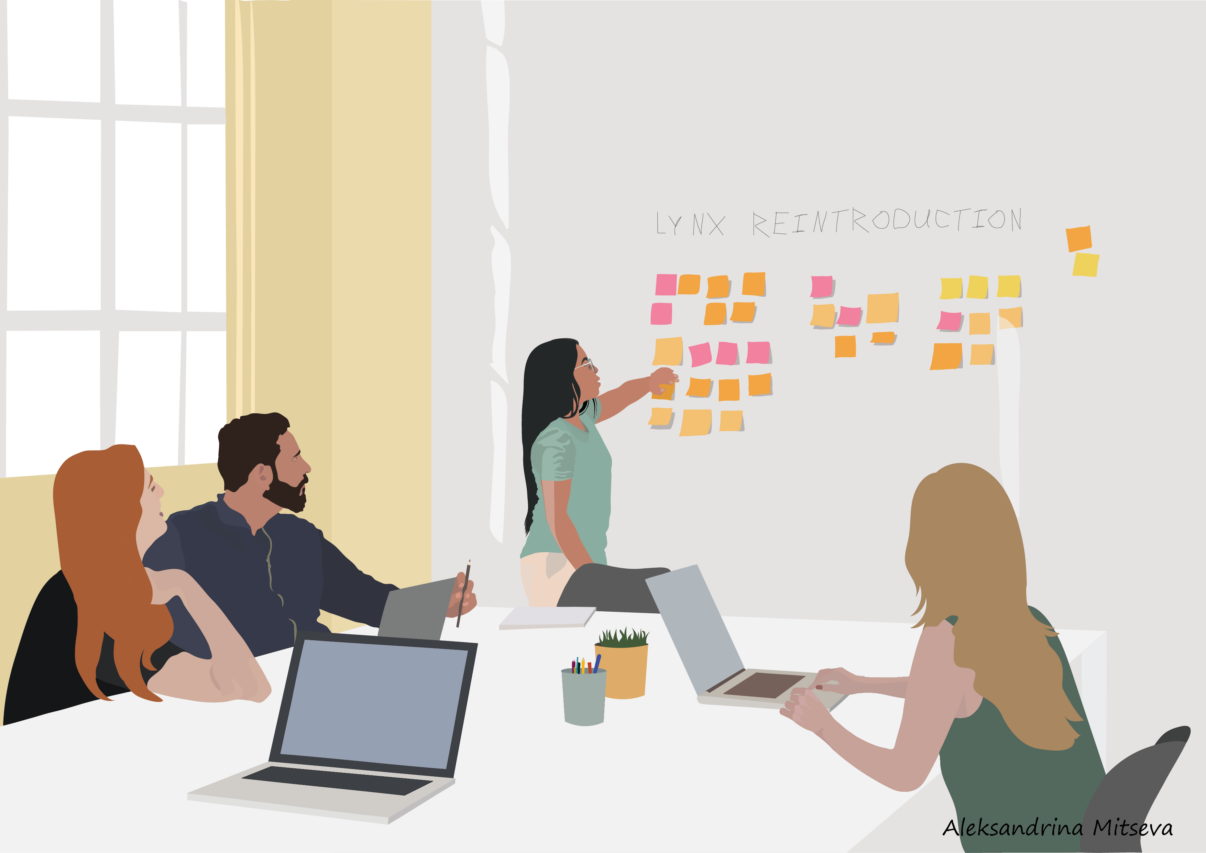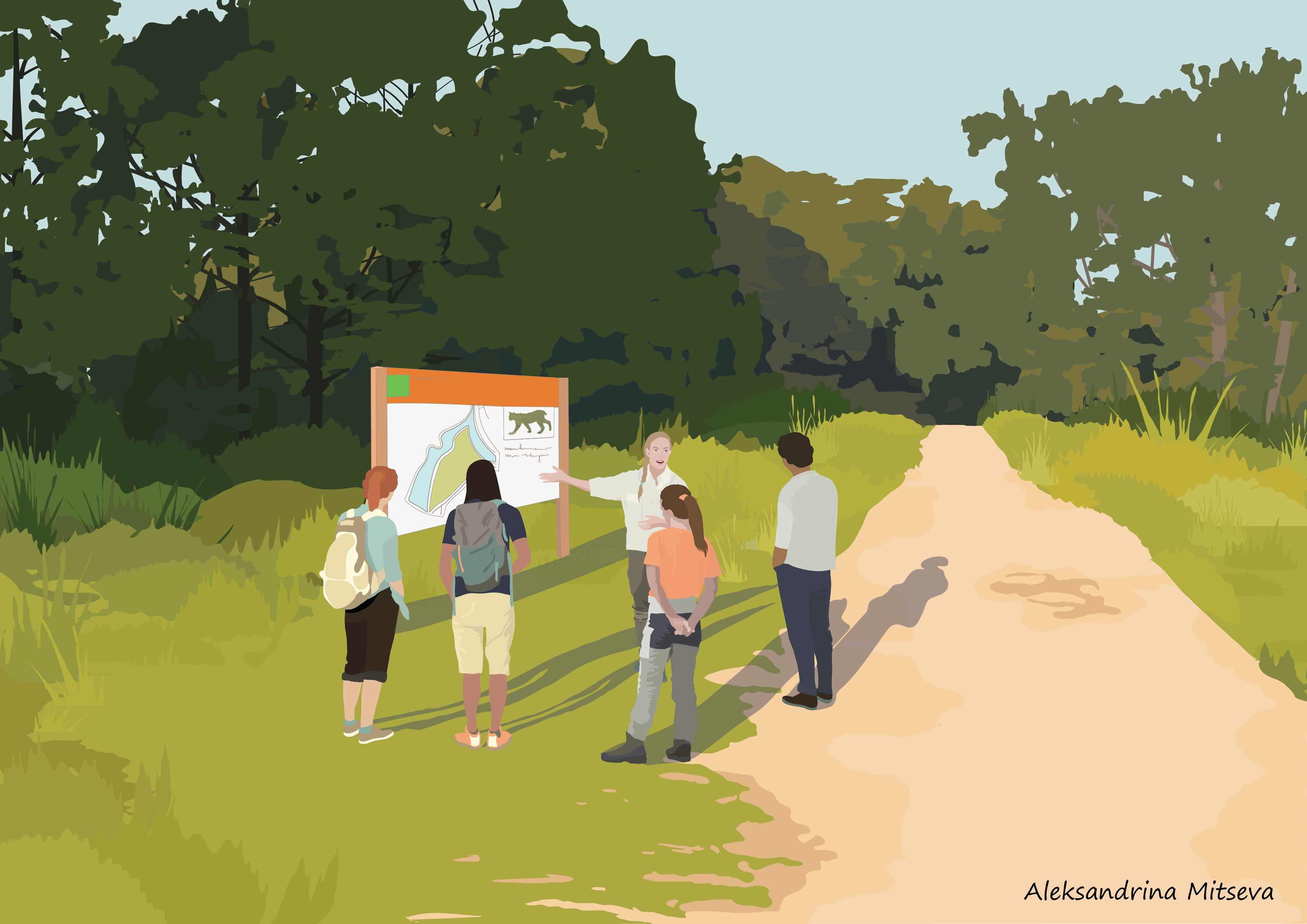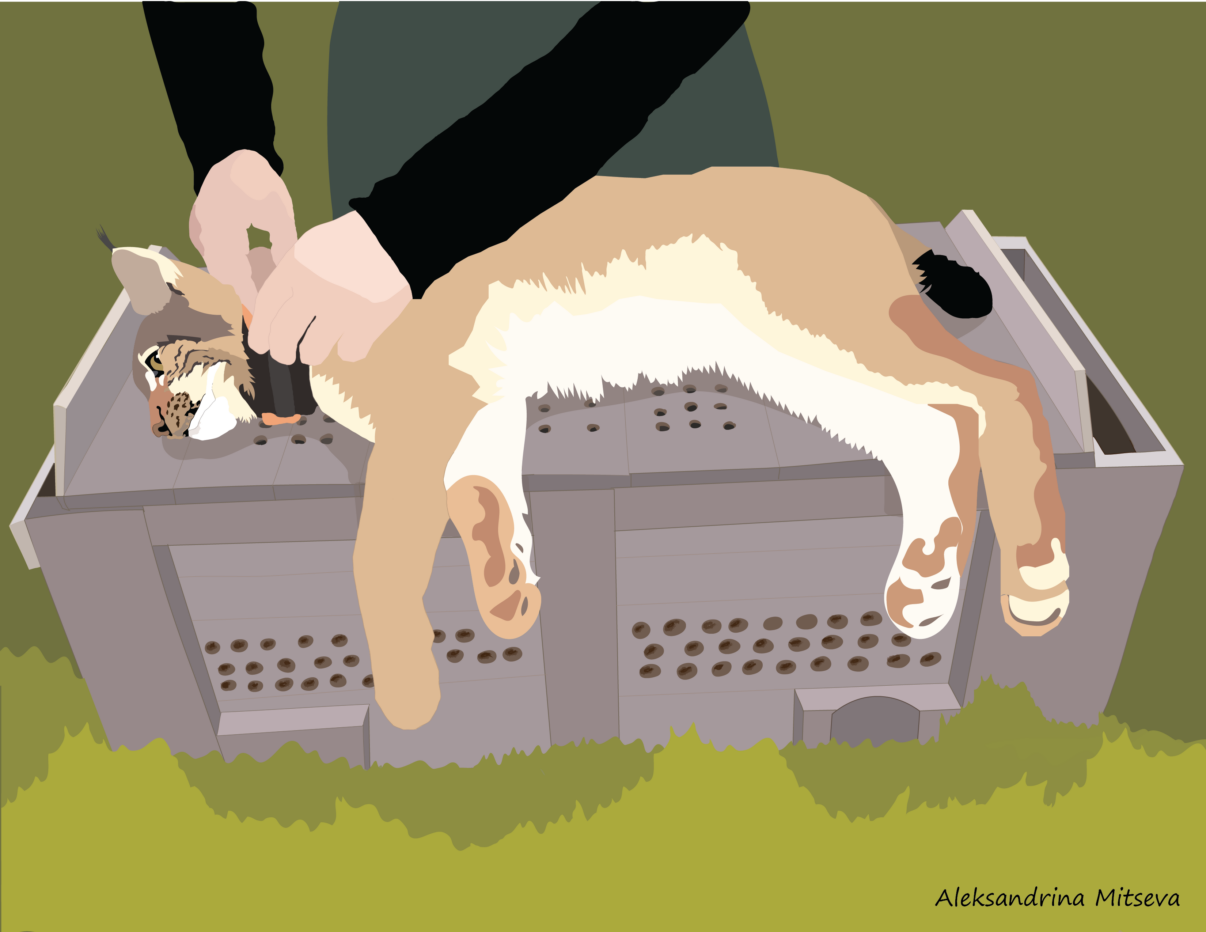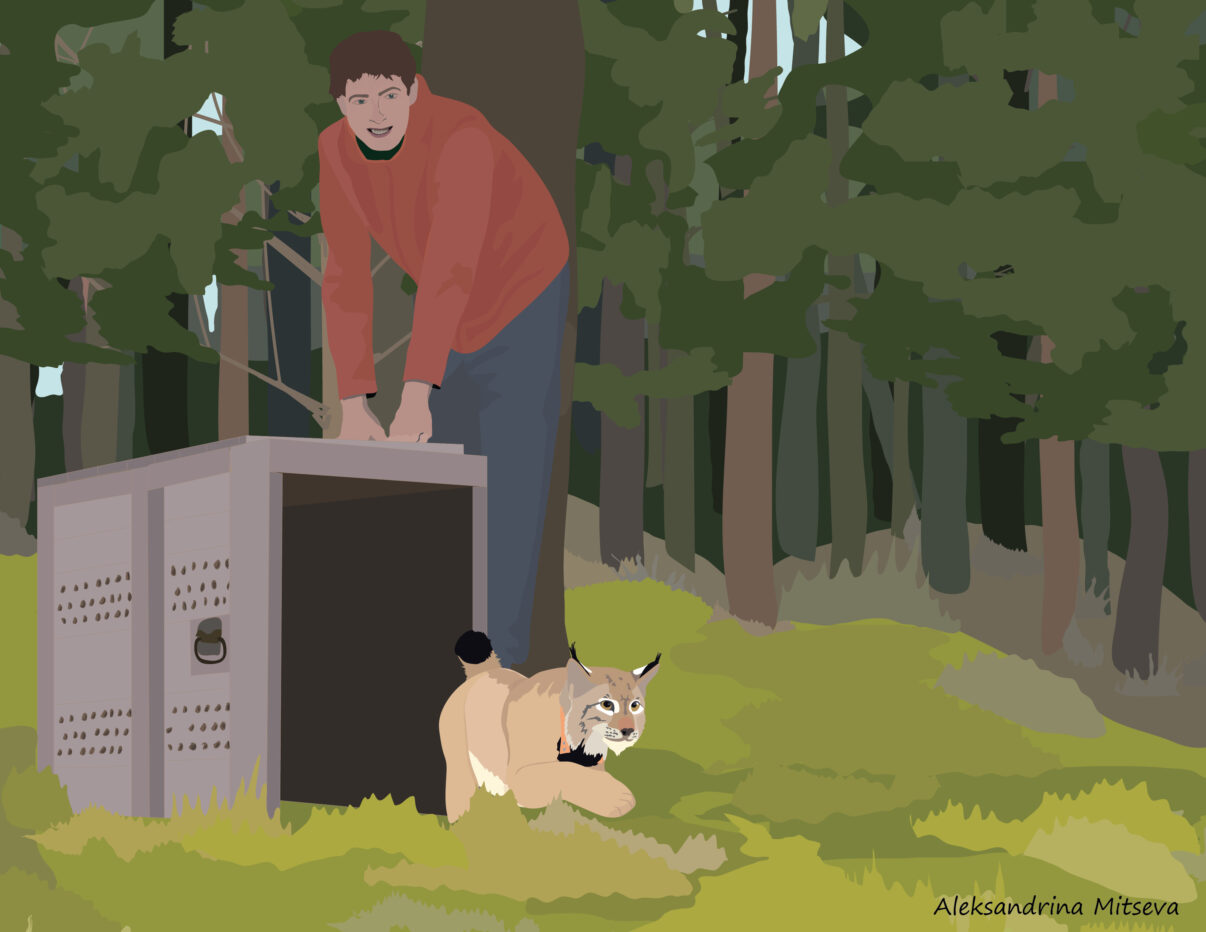
Working in rewilding – being a rewilder – takes many different shapes and forms.
It is common to think that being a rewilder means being on the ground and in the field all the time among wildlife – but that’s not it. The release of a lynx is a perfect example to illustrate how many roles are actually involved in a process like that, some of which don’t seem to have anything to do with rewilding directly. Follow this process through the illustrations made by our co-founder and member Aleksandrina Mitseva, who is an Educated Illustrator, Graphic Designer and Conservation Biologist. Her work brings this rewilding story to life and showcases the steps of the release of a lynx with some of the roles that contribute to this, well beyond just ecologists.
1. Research & Planning

The research and planning phase has everything to do with preparation. The idea for a lynx release is born here but then the why, when, where and how come into play. You need researchers on ecology, animal behaviour and habitat requirements. Also the social aspects of a release have to be mapped by an expert, like a social scientist. Fundraisers, lobbyists, legal experts and government agencies all have their role to play in this initial phase of the lynx release. A good preparation will ensure a smooth process, and for that a lot of different parties and roles are involved.
2. Project Management

Any project needs management. This most often requires project managers to oversee the whole process, which is supported by administrative staff to help with bureaucracy, documentation and correspondence. Next to that, accountants and/or a financial team is be responsible for managing all the financial aspects of the project. They handle budgeting, financial planning, tracking expenditures, ensuring compliance with financial regulations, and providing financial analysis and reporting to support decision-making related to the reintroduction efforts.
3. Communication

To create sufficient support (both before, during and after the release) for the rewilding action, local communities, landowners and stakeholders need to be informed. This is where different communication roles come into play. Community outreach specialists, public relations specialists, marketing professionals and social media managers are all needed to provide information to the stakeholders. Also (environmental) journalists, photographers/videographers, web designers and all sort of content creators are essential to get the information out there in a visually attractive way.
4. Pre-release preparation

For the phase preparing for the actual release another set of roles come into play. Captive breeding experts might be needed to collaborate with captive breeding programs to breed and raise lynx individuals for reintroduction. Animal caretakers and veterinarians ensure the health and welfare of the lynx during captivity and transport, during which transport specialists arrange and coordinate the safe and humane transport of lynx individuals from captive facilities to the release site. This varies from those that coordinate the transport from the transport compan, to the actual truck driver transporting the animal. All of them in their own way contributing to the rewilding cause.
5. Release & Monitoring

As you can see, up until the actual release there are already a ton of people and roles involved. During and after the actual release, field biologists, wildlife technicians, data scientists and researchers all have their role to play. From monitoring the animals(s) by collecting data on movement, behavior, survival and reproductive success to managing the data collection, storage and basic analyses and eventually writing scientific publications based on data collected during the monitoring.
Besides these roles, bringing your rewilding mindset to whatever (environmental) job or task you do is actively rewilding. You don’t have to work for a rewilding organization or a place that has “rewilding” in the work description to do this. Actually, the more rewilding-minded people occupy positions and roles in organizations, governments and companies the quicker the rewilding movement will progress. Even by talking about rewilding you are contributing, so, pick your path and be a rewilder!